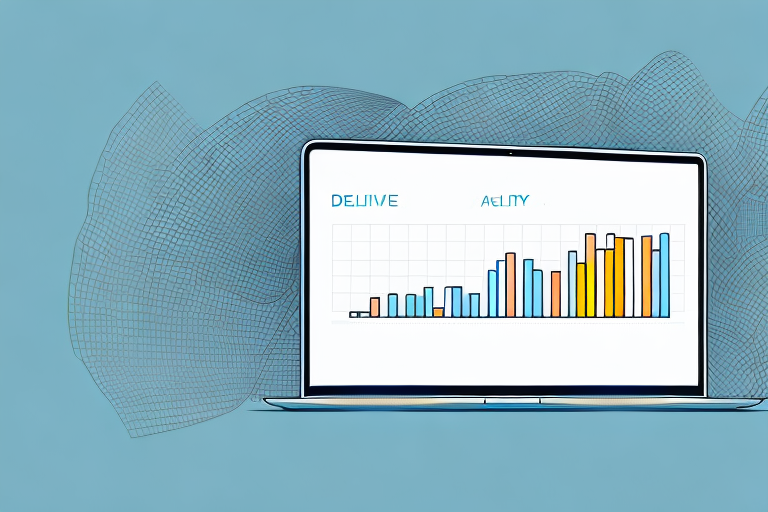Understanding Delivery Metrics: Measuring and Enhancing Your Performance
In today's competitive marketplace, efficient product delivery is paramount for business success. Effective delivery metrics are essential tools that help businesses assess and improve their delivery performance, ensuring timely and reliable service to customers. This article delves into the significance of delivery metrics, methods to measure and enhance them, and best practices for optimizing your delivery processes.
The Importance of Delivery Metrics for Business Success
Delivery metrics are critical for multiple reasons:
- Performance Assessment: Identifying areas where delivery processes may be underperforming allows businesses to implement targeted improvements.
- Goal Setting: Establishing realistic delivery targets and tracking progress helps businesses stay aligned with their strategic objectives.
- Operational Insight: Understanding delivery performance offers a window into the overall efficiency and health of business operations.
Moreover, analyzing delivery metrics over time can reveal trends and patterns, such as peak delivery times or recurring delays, enabling businesses to adjust their operations proactively. High delivery performance is closely tied to customer satisfaction, as timely and accurate deliveries foster trust and encourage repeat business.
Key Components of Delivery Metrics
Effective delivery metrics encompass several key components:
- Delivery Speed: Measures the time taken from order placement to delivery completion.
- Delivery Accuracy: Assesses the correctness of orders delivered without errors or damages.
- Delivery Reliability: Evaluates the consistency of meeting promised delivery times.
These components can be further broken down into specific metrics such as on-time delivery rate, order accuracy rate, and delivery confirmation rate. Tracking these metrics provides a comprehensive view of delivery performance and highlights areas for improvement.
Calculating Your Delivery Metric Score
Calculating a delivery metric score typically involves the following steps:
- Data Collection: Gather data on various delivery aspects over a specific period, such as monthly or quarterly.
- Metric Calculation: Compute individual metrics like on-time delivery rate by dividing the number of on-time deliveries by the total deliveries.
- Weighted Scoring: Assign weights to each metric based on their importance to your business and calculate a composite score.
For instance, if on-time delivery is 90%, delivery accuracy is 95%, and delivery speed averages 2 days, you can create a weighted score that reflects overall delivery performance. Utilizing this score helps in benchmarking and tracking improvements over time.
Overcoming Challenges in Measuring Delivery Metrics
Measuring delivery metrics presents several challenges:
- Data Accuracy: Ensuring the reliability of collected data is crucial for accurate metric calculation.
- Data Consistency: Maintaining uniform data collection standards prevents inconsistencies that can skew results.
- External Factors: Variables like weather disruptions or supply chain issues can impact delivery performance.
To address these challenges, businesses should implement robust data collection and analysis protocols, utilize automated tracking tools, and account for external variables in their assessments. Additionally, standardizing metrics across different departments and delivery methods ensures comparability and coherence in performance evaluation.
Strategies to Improve Your Delivery Metric Score
Improving your delivery metric score involves several strategic actions:
- Process Optimization: Streamlining delivery workflows reduces delays and enhances efficiency.
- Enhanced Communication: Keeping customers informed through real-time updates boosts satisfaction and trust.
- Technology Investment: Implementing advanced tracking and analytics tools provides deeper insights into delivery performance.
Offering diverse delivery options, such as same-day, next-day, and standard delivery, caters to varying customer needs and can significantly enhance delivery performance metrics. Regularly analyzing delivery data to identify bottlenecks and implementing targeted improvements ensures continuous performance enhancement.
Setting Realistic Targets for Delivery Metrics
Establishing achievable delivery targets requires a thorough understanding of your business's capabilities and market conditions:
- Historical Data Analysis: Reviewing past performance data helps in setting realistic and informed targets.
- Benchmarking: Comparing your metrics with industry standards provides a reference point for setting goals.
- Customer Expectations: Aligning targets with customer expectations ensures that delivery performance meets or exceeds satisfaction levels.
Regularly reassessing and adjusting targets in response to business growth and market changes ensures that delivery performance goals remain relevant and attainable.
The Role of Technology in Enhancing Delivery Metrics
Technology plays a pivotal role in tracking and improving delivery metrics:
- Real-Time Tracking: GPS and barcode scanning technologies provide real-time visibility into delivery status, enabling prompt issue resolution.
- Data Analytics: Advanced analytics tools offer insights into delivery patterns and inefficiencies, guiding strategic improvements.
- Automation and AI: Automating routine tasks and utilizing artificial intelligence can enhance accuracy and reduce human errors.
Implementing route optimization software can significantly reduce delivery times and costs by identifying the most efficient delivery pathways. Additionally, providing customers with real-time updates through various channels, such as email or mobile apps, enhances transparency and satisfaction.
Best Practices for Managing and Optimizing Delivery Processes
Adopting the following best practices can lead to optimized delivery processes:
- Regular Data Analysis: Continuously monitoring and analyzing delivery data helps identify trends and areas for improvement.
- Customer Feedback Integration: Actively seeking and incorporating customer feedback ensures that delivery services align with customer needs.
- Performance Monitoring: Utilizing key performance indicators (KPIs) to track delivery performance facilitates ongoing optimization.
Ensuring that your team is well-trained and equipped with the necessary tools and technologies is essential for maintaining high delivery standards. Clear communication channels within the team and with customers minimize misunderstandings and enhance overall delivery efficiency.
Case Studies: Companies Excelling in Delivery Metrics
Several companies have successfully improved their delivery metrics:
- Amazon: By introducing two-day, one-day, and same-day shipping options, Amazon has set industry standards for delivery speed and reliability.
- Zappos: Offering free shipping and a 365-day return policy, Zappos has achieved high levels of customer satisfaction and loyalty.
- Walmart: Implementing free two-day shipping and the "Pickup Today" program, Walmart has enhanced its delivery options, competing effectively with major players like Amazon.
These companies demonstrate the impact of strategic delivery enhancements on customer satisfaction and business growth.
Future Trends in Delivery Metrics
The landscape of delivery metrics is evolving with technological advancements and changing consumer expectations:
- Autonomous Delivery Vehicles: The use of drones and self-driving vehicles is poised to revolutionize delivery speed and efficiency.
- Sustainable Delivery Practices: There is a growing emphasis on eco-friendly delivery options to minimize environmental impact.
- Advanced Data Analytics: Leveraging big data and machine learning will enable more precise route optimization and demand forecasting.
Businesses that adopt these emerging trends will be better positioned to meet future delivery challenges and maintain a competitive edge.
Conclusion: Enhancing Your Delivery Performance Today
Optimizing delivery performance is essential for sustaining business growth and ensuring customer satisfaction. By meticulously measuring delivery metrics, identifying improvement areas, and implementing best practices and advanced technologies, businesses can achieve reliable and efficient delivery operations.
Key steps to improve delivery performance include:
- Establishing Clear Communication: Providing customers with real-time order updates and diverse delivery options enhances their experience and trust.
- Optimizing Delivery Networks: Analyzing and refining delivery routes, warehouse locations, and partnerships with logistics providers ensures operational efficiency.
- Investing in Technology: Utilizing tracking systems, analytics tools, and automation technologies streamlines delivery processes and reduces errors.
By prioritizing these strategies, businesses can deliver exceptional service, foster customer loyalty, and stay ahead in the competitive market landscape.
Additional Resources
- Supply Chain Digital - Insights and trends in supply chain management.
- Inbound Logistics - Resources on logistics and supply chain strategies.
- McKinsey Operations Insights - Research and analysis on operations and delivery optimization.






















